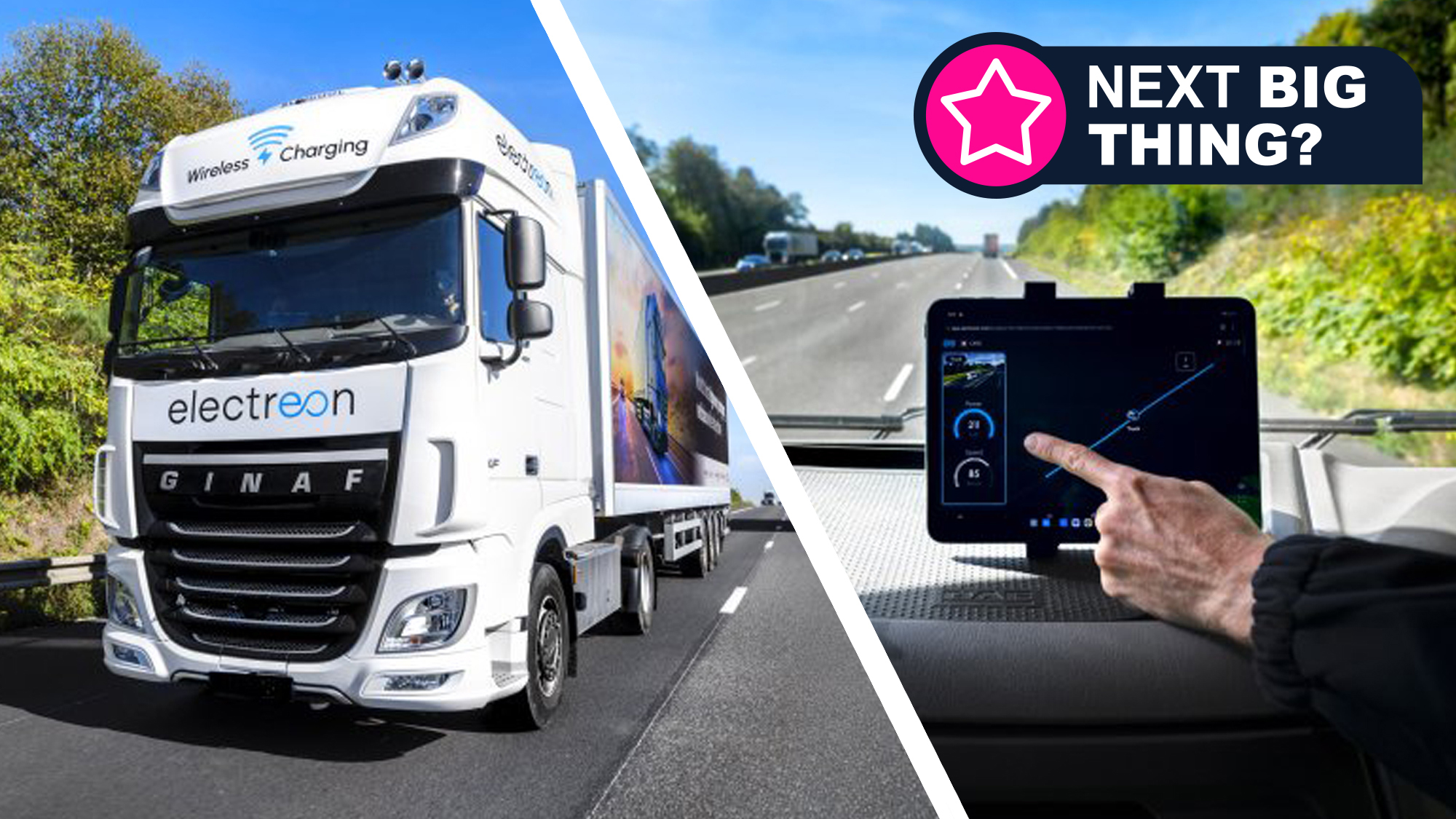Forget charging stations – this French highway can wirelessly charge EVs faster than Tesla's Supercharger network
A small stretch near Paris is busy wirelessly topping up EVs

- Around a mile of French highway has been fitted with induction coils
- The small section is a testbed for trucks, vans, cars and buses
- Sustained charging speeds of over 200kW have been reported
A small section of highway just outside of Paris, France is currently acting as a testbed for the next generation of dynamic vehicle charging, offering charging speeds of up to 300kW without the need for bulky wires and cables.
Part of the Charge as you Drive project, which involves Electreon, Gustave Eiffel University and Vinci – a global mobility infrastructure company – the 1.5km (just under a mile) section of the A10 highway has been fitted with induction coils underneath the surface, so those involved in the project can assess the performance of the induction charging system.
According to Vinci, the early results have been “very encouraging”, with more than 300kW of instantaneous power delivered and 200kW of average power delivered under optimal “steady-state” conditions.
The trials, which are taking place on highways that are open to the public, currently involve just one truck, a van, a car and a coach, all of which have been fitted with the appropriate receiver technology to wirelessly top up the onboard battery packs.
Vinci states that if deployed on a large scale, the inductive charging road surfaces could considerably reduce the weight of batteries in electric vehicles, as they wouldn’t need to be so large to offer the required range to get from A to B.
On the contrary, so long as the batteries offer enough range to travel to and from these stretches of highway, they could be drastically reduced – by “several tonnes in the case of heavy electric vehicles”, according to Vinci.
As a result, cost, carbon footprint and material footprint would also be cut, while eliminating charging stops and range limitations, both of which are expensive for fleet operators.
Sign up for breaking news, reviews, opinion, top tech deals, and more.
The French project is the only trial in the world currently operating on open highways, but it isn’t the first of its kind, with bus routes in Germany, taxi cabs in Sweden and heavy goods vehicles in the US all undergoing similar experiments to validate the technology.
Analysis: Too good to be true?

Wireless EV charging isn’t exactly a new concept, with some of the first dynamic charging demonstrations taking place as early as 2010.
However, the technology has moved on to a point where it can now be introduced to public roads on a small scale.
Plus, Porsche has demonstrated that static wireless charging can be a commercially viable offering, with an 11kW wireless charging pad now offered to customers of the upcoming Cayenne EV.
But rolling out a network of new roads fitted with induction coils would prove hideously expensive and retrofitting infrastructure with the tech would be even worse, especially considering the disruption it would cause.
There’s also no word from Vinci on how costly the bespoke wireless receivers were to build and fit to an existing EV, assuming they would need to be fairly special to handle the lofty charging speeds touted.
Rather than ripping up the roads and installing expensive induction coils, some parts of the world have managed to decarbonize their public transport systems using overhead cabling, either to power trams or to fast-charge electric buses every time they pull up to a stop.
Vinci’s vision is to accelerate the electrification of heavy duty vehicles from the freight transport and logistics sector, which alone accounts for more than 16% of France’s greenhouse gas emissions, according to Nicolas Notebaert, CEO of Concessions at Vinci.
If dynamic charging can reduce the energy density required in trucks, it could convince fleet operators to make the switch. But convincing governments to foot the infrastructure bill could be the biggest challenge.
Follow TechRadar on Google News and add us as a preferred source to get our expert news, reviews, and opinion in your feeds. Make sure to click the Follow button!
And of course you can also follow TechRadar on TikTok for news, reviews, unboxings in video form, and get regular updates from us on WhatsApp too.

Leon has been navigating a world where automotive and tech collide for almost 20 years, reporting on everything from in-car entertainment to robotised manufacturing plants. Currently, EVs are the focus of his attentions, but give it a few years and it will be electric vertical take-off and landing craft. Outside of work hours, he can be found tinkering with distinctly analogue motorcycles, because electric motors are no replacement for an old Honda inline four.
You must confirm your public display name before commenting
Please logout and then login again, you will then be prompted to enter your display name.